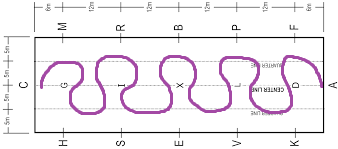That’s kind of the situation with this horse, which is why I didn’t mind playing with the poles a little. He’s my eventer and no way in hell am I ever going to compete at Advanced, which is the first level at which you do flying changes in dressage. I’m teaching him changes for fun, to have something to work on over the winter, to broaden my own experience, and to use when jumping. They don’t come naturally to him AT ALL and he’s perfectly willing to cross-canter, so it’s been a challenge. I only have eyes on the ground once a week and sometimes (see photo collage above) there’s so much going on underneath me that it’s hard to tell whether they’re clean or what went wrong. Ah well, it’s all about the journey!
Too bad I have no idea how to replicate it!  Pretty sure it was just luck that we finally got one good rep after many leaps. Add me to the list of people who would love to see video of someone accomplishing this on purpose and with n>1.
Pretty sure it was just luck that we finally got one good rep after many leaps. Add me to the list of people who would love to see video of someone accomplishing this on purpose and with n>1.




